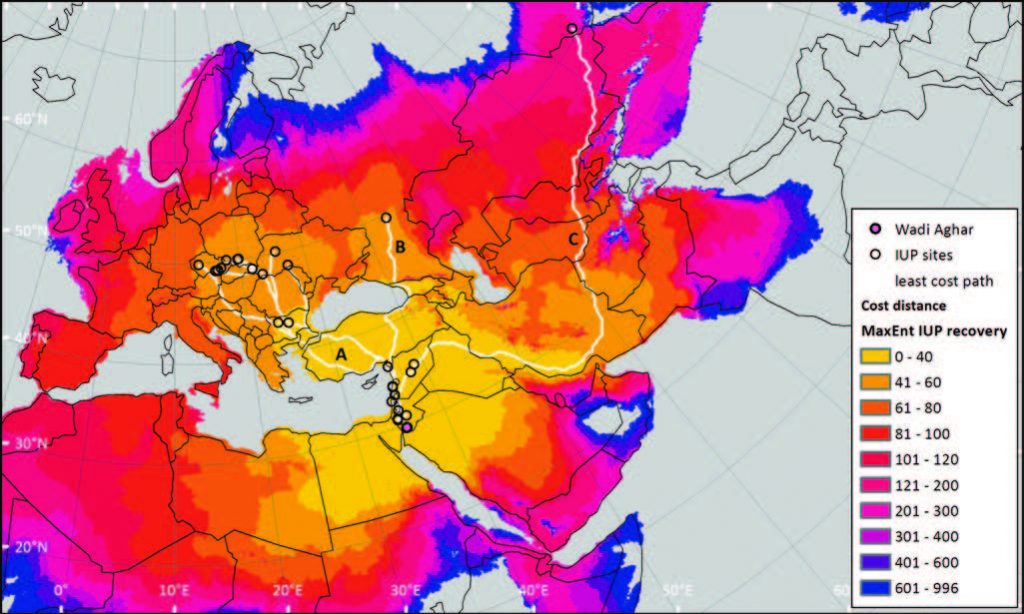Ecological Niche and Least-Cost Path Analyses to Estimate Optimal Migration Routes of Initial Upper Palaeolithic Populations to Eurasia, by Kondo et al. (2018), from The Middle and Upper Paleolithic Archeology of the Levant and Beyond, Replacement of Neanderthals by Modern Humans Series. Chapter downloadable at Academia.edu.
Abstract:
This paper presents a computer-based method to estimate optimal migration routes of early human population groups by a combination of ecological niche analysis and least-cost path analysis. In the proposed method, niche probability is predicted by MaxEnt, an ecological niche model based on the maximum entropy theory. Location of known archaeological sites and environmental factors derived from palaeoterrain and palaeoclimate models, are input to the model to calculate the niche probability at each spatial pixel and weights of the environmental factors. The inverse of probability score is then used as an index of relative dispersal rate to accumulate the travel cost from a given origin. Based on this cumulative cost surface, least-cost paths from the origin to given destinations are visualised. This method was applied to the Initial Upper Palaeolithic population group (probably of modern humans) in Eurasia. The model identified three migration routes from the Levant to (1) Central Europe via Anatolia and Eastern Europe, (2) the Russian steppe via Caucasus Mountains, and (3) the Altai region via the southern coastal Iran and Afghanistan.

Check out also the chapter The Middle to Upper Paleolithic Transition in the Zagros: The Appearance and Evolution of the Baradostian, by Sonia Shidrang, from the same book. Also downloadable at Academia.edu.
Featured image from the chapter: “Niche probability for the IUP lithic industry predicted by MaxEnt using the palaeoclimate model from the recovery experiment (corresponding to a warm/humid phase).”
See also:
- Review article about Ancient Genomics, by Pontus Skoglund and Iain Mathieson
- Review article on the origin of modern humans: the multiple-dispersal model and Late Pleistocene Asia
- Science and Archaeology (Humanities): collaboration or confrontation?
- Massive Migrations? The Impact of Recent aDNA Studies on our View of Third Millennium Europe
- Long-term genetic structure in ancestral Native Americans, consistent with the Beringian ‘standstill model’
- Potential Afroasiatic Urheimat near Lake Megachad